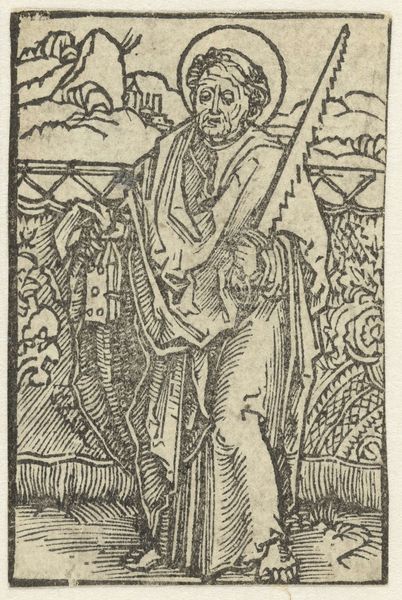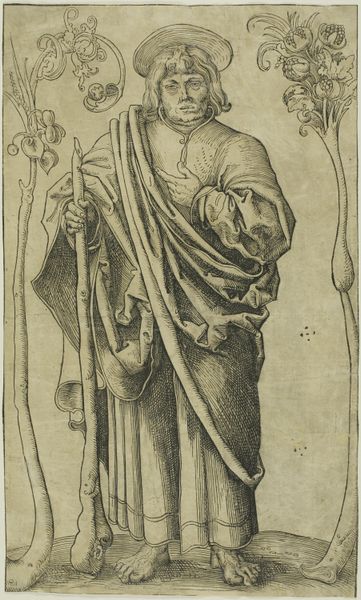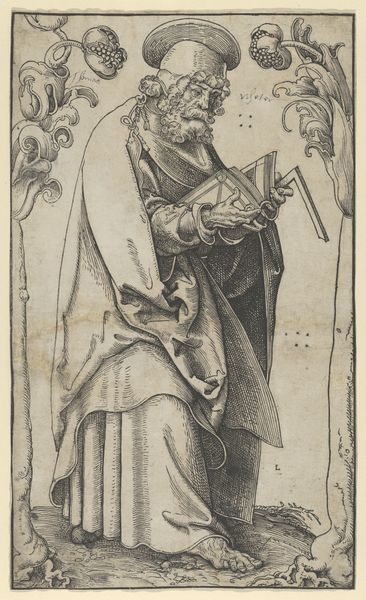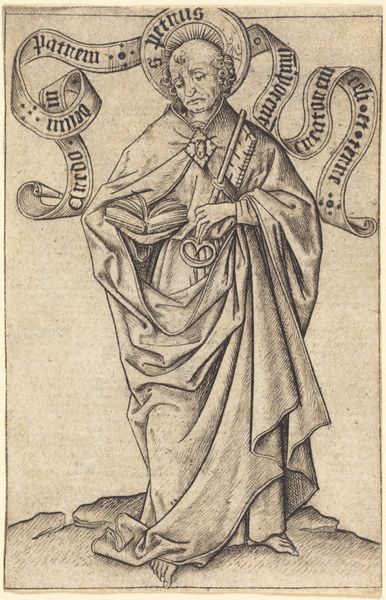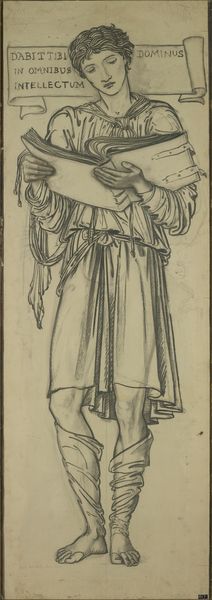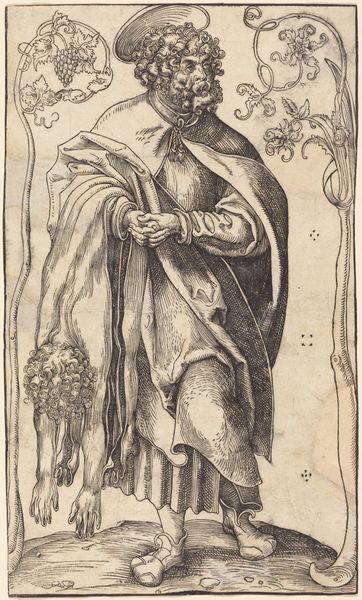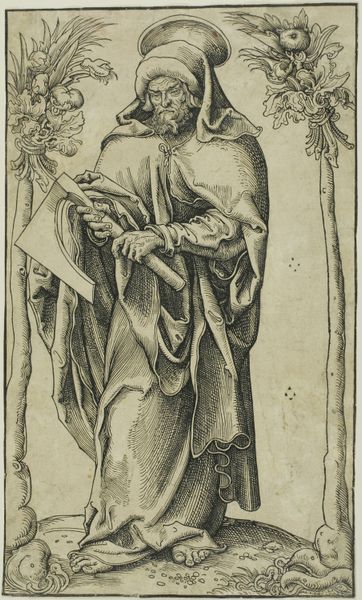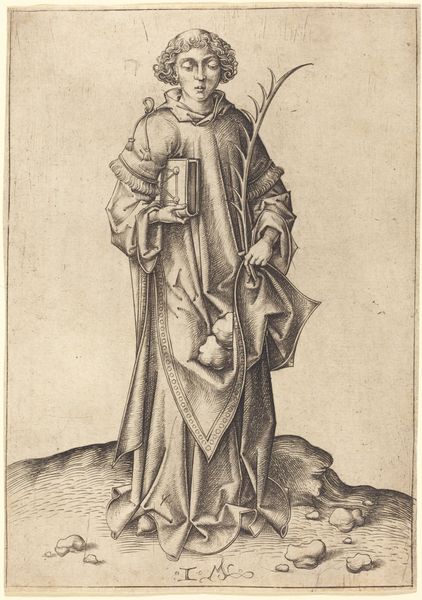
print, engraving
#
portrait
#
medieval
# print
#
figuration
#
engraving
Copyright: National Gallery of Art: CC0 1.0
Curator: Welcome. Let's take a moment to appreciate "Saint Peter," an engraving created around 1465 by Israhel van Meckenem. Editor: My first impression is one of quiet solemnity. There's a softness in the rendering despite the rigidity one might expect from an engraving. The figure’s downcast gaze contributes to a mood of reflection, almost of vulnerability. Curator: The figure dominates the composition, framed by linear perspective converging towards a vanishing point, thus creating spatial recession on a 2D surface, a core compositional concern of early Northern Renaissance prints. His robes, delineated by meticulous parallel lines, are volumetrically impressive given the limitations of the engraving technique. Editor: The use of light and shadow does bring out the sculptural qualities of the form, it's true. Considering Peter's traditional role as the first Pope and the keeper of the keys to heaven, how might this image function in the socio-political context of its time? Was it an assertion of papal authority or perhaps something more complex, given that Meckenem operated outside the direct control of the church? Curator: His attributes are subtly emphasized – the keys he holds are unmistakable. And that open book indicates his erudition and direct access to sacred text. But to your point about Meckenem’s workshop, the dissemination of religious imagery to a broader audience also suggests an evolution in religious devotion and access. This challenges traditional notions of hierarchy and who is worthy to represent the apostle. Editor: Yes, the mass-produced nature of prints allows for a more democratic distribution of images that had formerly been limited to elites, and invites wider interpretations of sainthood. Curator: Notice, too, how the swirling banner bears Latin script. It’s carefully rendered. The script, the very marks forming letters and words, contributes significantly to the image's visual weight. Editor: This focus on language reinforces how images such as this were designed not merely for visual consumption, but to communicate certain learned ideologies and maintain hierarchies, despite their expanded distribution. Considering its role as an early example of printed image technology, it highlights how faith could be disseminated using the latest methods of communication. Curator: Absolutely. These converging planes and fine lines not only evoke a figure in space, but also the artist’s precise technical capabilities. Editor: The figure embodies profound spirituality shaped by burgeoning methods of print, reflecting technological and social transitions. It certainly offers a poignant commentary about representation.
Comments
No comments
Be the first to comment and join the conversation on the ultimate creative platform.
